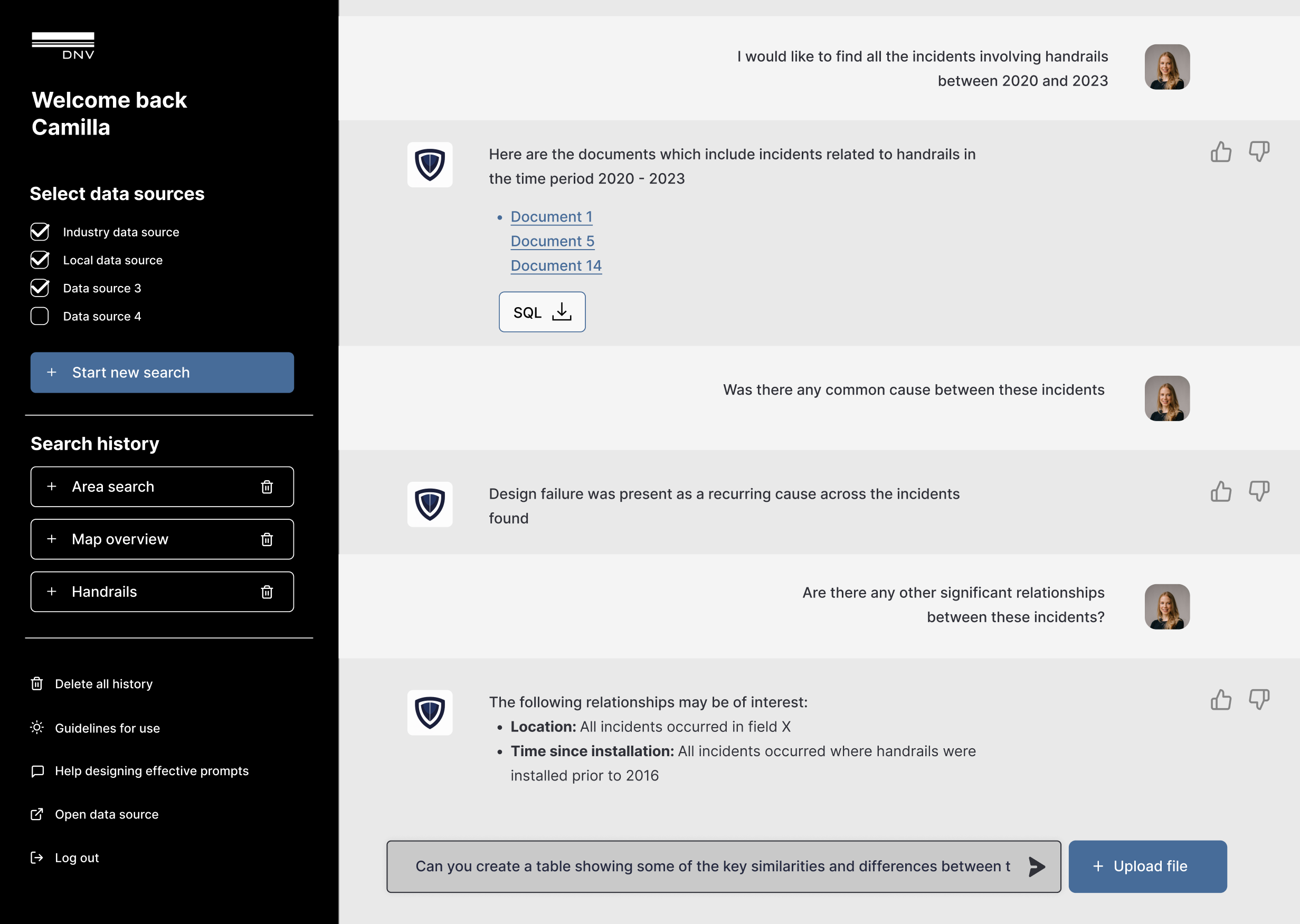DNV report for Havtil explores how an AI search and analysis tool could reduce offshore risk
Artificial intelligence has the potential to make offshore operations safer. DNV has published a report for the Norwegian Ocean Industry Authority (Havtil), exploring how artificial intelligence (AI) can be used to increase safety in the industry, focusing initially on dropped object incidents.
DNV’s pilot project report, “Use of artificial intelligence to reduce danger and risk of accidents due to falling objects,” focuses on improving learning and insights from existing data using AI, language technology and ontologies. The project uses historical data on incidents involving dropped structural objects.
Havtil, previously known as Petroleumstilsynet, is the Norwegian government’s supervisory and administrative agency, with regulatory responsibility for safety, working environment, emergency preparedness and security on the Norwegian continental shelf. Havtil has collected extensive data over several decades, including reports and databases from inspections, investigations and damage analyses. The data is of high quality but difficult to access for systematic learning. The DNV report identifies the need to leverage new technology to make this information more accessible and useful.
"Our collaboration with DNV on developing an ontology for falling objects is a promising step forward for using AI on industry safety data,” says Morten Langøy, Principal Engineer at Havtil. “We plan to continue to expand this together with the industries’ domain experts to create a more comprehensive model for incident causation," he says.
About the pilot project
DNV is building an architecture that uses a prototype AI tool paired with ontologies to increase the AI’s understanding of the data’s relationships and eliminating hallucinations, when the model generates false, misleading or nonsensical information that appears plausible but isn't based on real data. An ontology, also known as a knowledge graph, is a structured framework that organizes information into categories and defines the relationships between them. It helps in understanding and managing complex data by providing a clear and systematic way to represent knowledge.
Safety teams would, instead of manually finding and reviewing hundreds of safety reports and other documents, ask the AI to analyse the information, gaining immediate insights that would be difficult or impossible for humans to see without the help of the technology. A strength of the tool over common large language models such as ChatGTP or Copilot is its connection with an ontology developed by domain experts. This ensures that data is understood in the correct context. The tool also offers full transparency of the data query used and the data sources, increasing the users’ trust in the output for sound business decisions.
"The report explores a promising approach to leveraging new technology to mitigate risks in the industry, particularly through the use of ontologies combined with AI," says David R. Watson, Innovation Lead at DNV - Digital Solutions.
The potential is for AI and large language models to be trained on massive amounts of collected data regarding safety incidents. Some of the most valuable information is locked in detailed investigation reports that are hard for the AI to access. Extracting the key facts is a significant challenge, as is teaching the AI to understand the complexity and nuance of human reports.

Example of the AI search engine
What can safety professionals ask the AI?
The AI can answer practical questions that safety professionals might ask through an interface that understands natural language. They could ask questions such as “What are the most common causes of falling objects during lifting operations on platform X?” or “Is there a correlation between the time of day and the severity of falling object incidents?” or “What were the common contributing factors in dropped object incidents in the last year?”
The system can then use historical data and make sense of the results. It summarizes the findings and highlights the most important patterns, presenting them in a way that’s easy for humans to understand. For example, it may discover that a certain type of dropped object incident on platform X is more common when certain weather conditions and crew shift patterns coincide.
Safeguards include transparency and data security. For example, the system shows the user the query so the expert can double-check it. It also keeps a process log of everything the AI does, step by step. Any answer can be checked, showing which queries have been run and which data were used.
The report highlights the potential of a new era of safety management. If the system could use data gathered from across the industry in an anonymized database. This could revolutionize safety practices by analysing patterns industry-wide.
About ontology engineering at DNV
DNV’s long experience in maritime and oil and gas classification includes working with structured vocabularies and rules. As the amounts of data have grown in size and complexity, digital reference structures are needed. DNV’s work in ontology engineering spans more than two decades. Digitalization and artificial intelligence are increasing the power of ontologies, giving them the means to transform industries. In addition to developing ontologies for customers, the ontology engineering team at DNV runs joint industry projects (JIPs) and organizes ontology engineering workshops, bringing industries and domain experts together.
